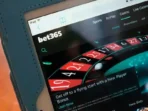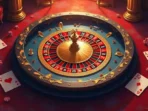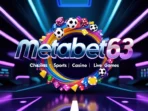Math games have clear mathematical parameters that define its rules, strategies, and outcomes. Chopsticks, Tic-Tac-Toe, Checkers are a few examples of games with basic rules and matching techniques. Mathematical games are distinct from mathematical puzzles.
Mathematical riddles need exact mathematical knowledge to solve, but math games do not require a deeper understanding of mathematics. Basic math theory is usually more useful than physically playing or watching a game when studying the game’s basic mathematics. It’s also a good idea to check into the rules, especially if they include mathematics or formulae, in order to accurately measure a game. This is generally done to determine winning tactics or determine whether the game has a solution.
Importance of Math Games
Games that are enjoyable and interesting are popular among everyone. Fundamental number principles can be taught to students via games. Students can also use them to strengthen their mathematical understanding. Games are a promising learning tool in educational settings:
- When students play games on a regular basis, they enhance their computational fluency.
- Games support learners in better understanding the number system and “standard numbers.”
- Playing games helps students to develop strategic mathematical thinking by allowing them to try out different problem-solving strategies while also boosting their numerical knowledge and understanding.
Examples
Multiple Mysteries: We like this game because of its simplicity and flexibility.
Playing Instructions: Playing cards and a calculator are required. This game can be played by 2 to 4 players. Take the tens and pictures out of the card deck. Keep the Jacks and Jokers in the deck if you want to ( representing zeroes).
- The teacher or the player selects a number of targets (e.g. 3,5,8).
- Each player is handed five cards, and the first person takes the first turn.
- The goal is to use some or all five cards to make a multiple of the particular target that is the focus for that round. For example, if the target multiple was 8, creating the number 48 with the cards 4 and 8 would earn you two points, but creating the number 248 with 2,4, and 8 would earn you three points. The more digits you have in your number, the more cards you’ll use, and the more points you’ll earn.
- The player then “banks” these cards in their bank and draws five cards from the deck at the start of the next turn.
- Any opponent can contest the player’s multiple by dividing the produced number by the intended multiple on any particular play using a calculator (e.g.248 divided by 8) If the opponent is correct, the cards used to calculate the number are “banked.” If the opponent is incorrect, they must pay a one-card penalty to the challenged player.
Among each player taking a turn, the game resumes. Once all cards in the deck have been played, the “banked” cards are counted up. The player who has “banked” most cards wins the game.
Surface Area of Cylinder
A three-dimensional structure with circular bases that are parallel to each other is known as a cylinder. The area occupied by a cylinder’s surface in three-dimensional space is considered its surface area. The surface area of cylinder is measured in square units.
Formula of Surface Area of Cylinder
The curved surface and the circular base are the two types of surfaces on a cylinder. As a result, the total surface area will be equal to the sum of the curved surface including the two circular bases.
The Surface Area of Cylinder = Curved Surface + Area of Circular bases
Surface area (in terms of π) = 2πr (h + r) sq.unit
Where, π (Pi) = 22/7 or 3.142
{r is the radius of the cylinder
h height of the cylinder.}
For a curved area or lateral area, use the formula: CSA or LSA = 2π × r × h Square units.
The cylinder’s base has a circular form. As a result, the area of the circular bases of a cylinder = 2 (πr^2) [because the cylinder is circular].
If you want to learn more about the topic in a fun and quick way, then visit Cuemath to book a free session.







